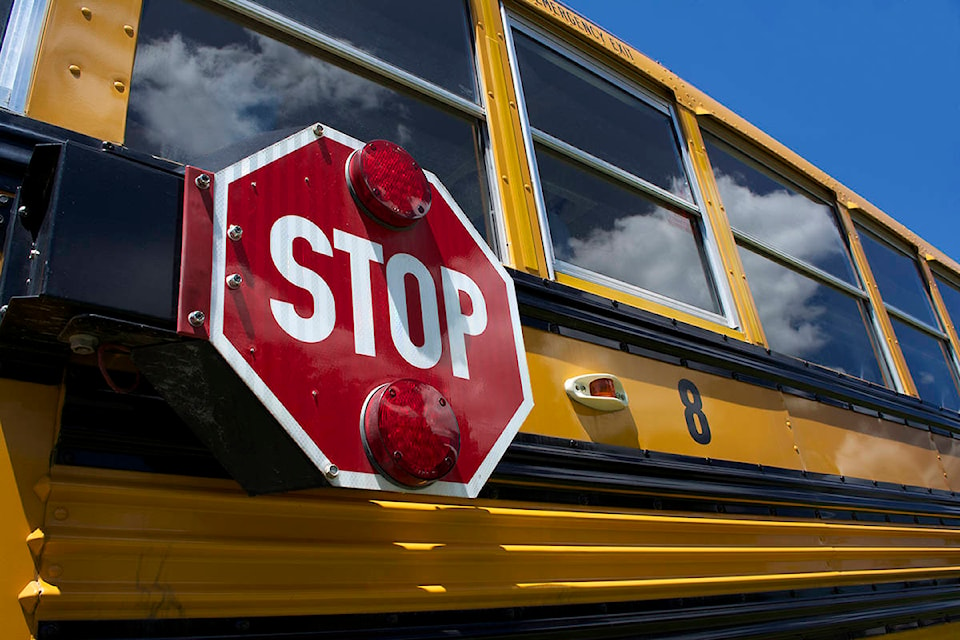Last week, Coun. Bruce Banman declared the traffic situation around Dr. Thomas A. Swift elementary to be a “gong show” when school lets out.
And while Mayor Henry Braun thought it wasn’t quite that bad, the fact the bar is set at the “gong show” level underscores how bad traffic can get around Abbotsford’s schools at certain times of the day.
Indeed, Coun. Ross Siemens suggested it would be hard to find any one school without some traffic challenge.
One reason, councillors note, is that fewer kids end up walking to school. Which is true.
But what I’ve rarely seen explored is the Catch 22 faced by parents and the no-man’s land that is school traffic planning.
RELATED: Traffic ‘gong show’ or perfect location? Different views on Abbotsford council as daycare approved
First: Many kids don’t walk to school because few kids walk to school. That sounds weird, but it’s just your standard vicious circle. Traffic around these schools can be so busy that parents understandably feel hesitant about letting their kids walk alone. So they drive their kids, which only adds to the problem.
I, a parent of a six-year-old who lives exactly one kilometre from her school, am one of these parents. I’ll eventually let her walk, but not now or next year. So I drive, adding to the large traffic volumes that I decry.
Now, there are ways to encourage more kids to walk by adding sidewalks, crossing guards, and crosswalks with flashing beacons. And the city is trying to fill in gaps in its sidewalk network to make it safer for kids to walk.
But here’s a radical idea: school buses. You may have heard of them. But his is where we get to the no man’s land of school traffic planning.
Those school buses are all paid for by the school district, which doles out money from the province to pay for education. Every dollar spent on a school bus is one not spent on a kid’s actual education. So, for well-meaning reasons, school districts around B.C. try to minimize their transportation spending. They do so by adding busing fees and restrictions on who is eligible to take a bus.
In Abbotsford, if you live within 3.2 kilometres from your kid’s elementary school, you now have to pay $400 for busing. (An aside: Those “walk limits” are ridiculously large: 3.2 kilometres is equal to the distance from Clearbrook Road to Jubilee Park. And that’s the elementary school walk limit. The middle and high school limit is four kilometres. The limits mean few kids qualify for free busing.)
Those costs inevitably funnels more kids into their parents’ cars. And even if they drop the kid off on the way to work, parents are still lengthening their commute and adding to the general congestion and wear and tear on Abbotsford’s roads. That represents a very real cost to the city and its taxpayers. You can see the impact schools have on traffic when congestion abates on those days when school isn’t in session.
But as districts try to trim their transportation budgets, Abbotsford and other cities are spending millions on infrastructure and transit to try to reduce their citizens’ car dependence.
It’s a dilemma with no easy solution. It’s hard to ask school districts – or the province – to spend more money on buses, rather than pencils. And cities don’t want to assume another ongoing cost.
So right now, the governments work at cross purposes. I ran these thoughts past Abbotsford’s mayor. Braun noted that the school district has taken the previously untaken step of asking the city for feedback as it prepares its own strategic plan. And although the city’s response is still being formulated, it may include a request for a traffic management plan.
Braun also suggested the province take an interest, and suggested funding could be tied to efforts to shrink B.C.’s greenhouse gas footprint. Parents, he added, also have a role to play, and can work together to car pool their kids to and from school.
The school district is itself redesigning some bus routes and looking to change its transportation strategy. People are working on these issues.
But I can’t help coming back to the underlying incentives that remain in place not only in Abbotsford, but across the province..
The province and its cities have never been more determined to increase transit ridership. But the province’s school districts have never been more determined to reduce it. That seems like a problem that, if not resolved, will continue to clog our roads.
Tyler Olsen is a reporter at the Abbotsford News.
p>
Do you have something to add to this story, or something else we should report on? Email:
tolsen@abbynews.com
